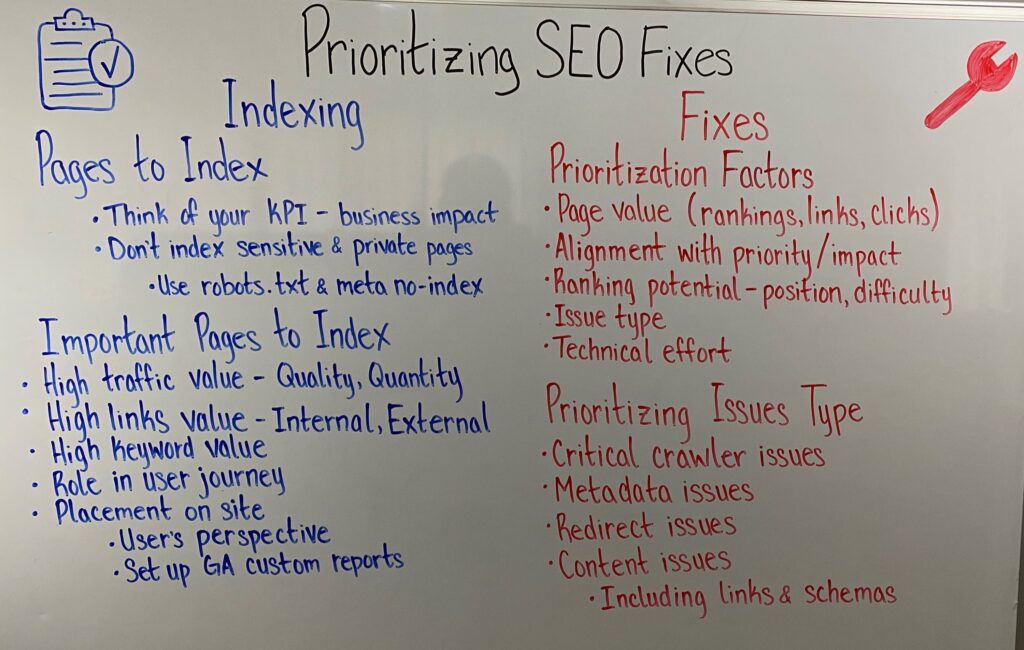Technical SEO is the process of optimizing a website for Google’s search algorithm. It involves improving the site’s architecture, code, and content so that Google can more easily crawl, index, and rank the site. Technical SEO can be complex, but it is essential for any website that wants to rank in Google’s search results.
Technical SEO is the process of optimizing a website for the search engines. It involves improving the site’s architecture, code, and content so that the search engines can easily index and crawl the site. Technical SEO also includes optimizing the server settings and ensuring that the site is accessible to both users and search engine bots.
What is Technical SEO and Why is it Important? – 4.1. SEO Course by Ahrefs
What Does Technical Seo Stand For?
Technical SEO is the optimization of a website for the purpose of improving its technical performance. This includes optimizing the website’s code, structure, and on-page elements like titles, metatags, and anchor text. Technical SEO can also include optimizing the server environment and improving site speed.
What is the Difference between Technical Seo And Seo?
The main difference between technical SEO and SEO is that technical SEO focuses on improving the website’s infrastructure and architecture to make it more search engine friendly, while SEO focuses on optimizing the website’s content for better search engine visibility.
Technical SEO includes elements such as site speed, indexation, sitemaps, structured data, meta tags, and URL structure. The goal of technical SEO is to improve the website’s crawling and indexing so that the pages can be properly indexed and ranked by the search engines.
SEO, on the other hand, focuses on optimizing the website’s content for better search engine visibility. This includes things like keyword research, title tags, meta descriptions, header tags, and image alt text. The goal of SEO is to help the pages rank higher in the search results for relevant queries.
What are Technical Seo Skills?
Technical SEO is the practice of optimizing a website for Google’s search algorithm. It is a subset of SEO that focuses on improving the visibility and ranking of a website in search engine results pages (SERPs). Technical SEO includes on-page optimization, off-page optimization, and technical aspects of link building.
On-page optimization is the process of optimizing individual web pages to rank higher and earn more relevant traffic in search engines. On-page factors include titles, metatags, keyword density, image alt text, internal linking, and external linking.
Off-page optimization is the process of promoting a website to increase its authority and trustworthiness in the eyes of search engines.
Off-page factors include backlinks from other websites, social signals (likes, shares, etc.), brand mentions, and citation flow.
Technical aspects of link building include link anchor text, link juice flow, nofollow links, 301 redirects, rel=canonical tags , hreflang tags , sitemap files , robots.txt files , structured data markup , and HTTP headers .
An important part of technical SEO is site speed .
Site speed refers to how fast a webpage loads when accessed by a user. A slow loading page can negatively impact user experience as well as your site’s ranking in SERPs. Page speed can be improved by optimizing images , minifying HTML , CSS , and JavaScript code , using browser caching , and reducing server response time .
What is Technical Seo And On-Page Seo?
SEO is the process of optimizing a website for Google search with the goal of earning higher web traffic levels and improving the visibility of the site. Technical SEO refers to the aspects of SEO that relate to the underlying code and structure of a website, while on-page SEO has to do with the actual content that appears on each page.
Technical SEO includes things like ensuring that your site is properly indexed by Google and other search engines, using the right URL format, having a sitemap, using proper tag hierarchy, and more.
On-page SEO, meanwhile, is all about creating high-quality content that’s optimized for both users and search engines. This means using keyword-rich titles and descriptions, as well as making sure your content is easy to read and contains relevant information.
Both technical SEO and on-page SEO are important for any website that wants to rank highly in search engine results pages (SERPs).
However, they serve different purposes: technical SEO ensures that your site is structured in a way that makes it easy for search engines to find and index your content, while on-page optimization helps make sure your pages are relevant and useful enough to earn high SERP rankings.

Credit: www.techwyse.com
Technical Seo Checklist
SEO is short for Search engine optimization. It is a long-term marketing strategy employed in order to improve a websites visibility and organic search results in google and other global search engines. Technical SEO is the practice of optimizing a website for Google’s algorithm with the goal of earning higher web traffic levels and improving the visibility of the site.
The following checklist provides an overview of some key areas to focus on when it comes to technical SEO:
1) Make sure your website is accessible to Googlebot and other search engine crawlers. This can be done by checking your robots.txt file to ensure that there are no restrictive directives preventing access.
You should also check for any broken links or 404 errors which could prevent Google from being able to properly index your site content.
2) Optimize your site structure and URLs for both usability and crawlability. Your URLs should be short, descriptive, and easy to understand.
They should also include relevant keywords wherever possible. Your site structure should be simple and logical, making it easy for Googlebot to navigate through your pages and find all of your content.
3) Improve the loading speed of your pages.
Google has stated that page speed is a ranking factor, so it’s important to make sure your pages load quickly. There are many factors that can affect page speed, including code efficiency, image size, server response time, etc. Use tools like PageSpeed Insights to identify potential issues and see where you can make improvements.
4) Implement schema markup on your site where appropriate. Schema markup is code (usually in JSON-LD format) that helps search engines understand the meaning of certain pieces of information on your website better than they would if they just relied on the plain text alone. This can help improve click-through rates from SERPs as well as Rich Snippets display in some cases 5) Ensure that all of your content is high-quality and unique .
This includes not only written content but also images , videos , infographics , etc . Any time you add new content to your site , make sure it’s top notch stuff that will provide value to users .
Technical SEO covers a wide range of topics, but these are five essential areas everyone should focus on for improved visibility in SERPs . By following this technical SEO checklist , you can make sure your website is primed for success in 2019 !
Types of Technical Seo
Technical SEO can be defined as the practice of optimizing a website for the purpose of improving its search engine rankings. It is a process that involves various techniques and strategies aimed at improving the visibility and ranking of a website in search engine results pages (SERPs). Technical SEO is generally considered to be a more complex and technical form of optimization than on-page SEO, which deals with optimizing individual web pages for specific keywords or phrases.
Some common techniques used in technical SEO include optimizing website architecture, URL structure, title tags, meta tags, header tags, and site speed.
Technical Seo Vs On-Page Seo
SEO can be broadly divided into two categories: on-page SEO and technical SEO. Both are equally important for ranking your website highly in search engine results pages (SERPs), but they serve different purposes.
On-page SEO is all about optimizing your website’s content and making sure it’s relevant to what people are searching for.
This includes things like using the right keywords, optimizing your title tags and meta descriptions, and making sure your site’s structure is easy to follow.
Technical SEO, on the other hand, deals with the more technical aspects of your website that can affect its ability to rank well in SERPs. This includes things like ensuring your site is mobile-friendly, setting up 301 redirects if you change your URL structure, and fixing broken links.
Both on-page SEO and technical SEO are important for getting your website to rank well in SERPs. However, they serve different purposes. On-page SEO focuses on optimizing your website’s content, while technical SEO deals with the more technical aspects of your site that can affect its ability to rank well in SERPs.
Conclusion
Technical SEO is the process of optimizing a website for the search engines. It includes optimizing the code, content, and structure of a website to make it more accessible to the search engine crawlers. Technical SEO can be divided into two parts: on-page optimization and off-page optimization.
On-page optimization deals with optimizing the code and content of a website, while off-page optimization deals with optimizing the structure of a website.

